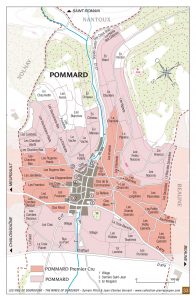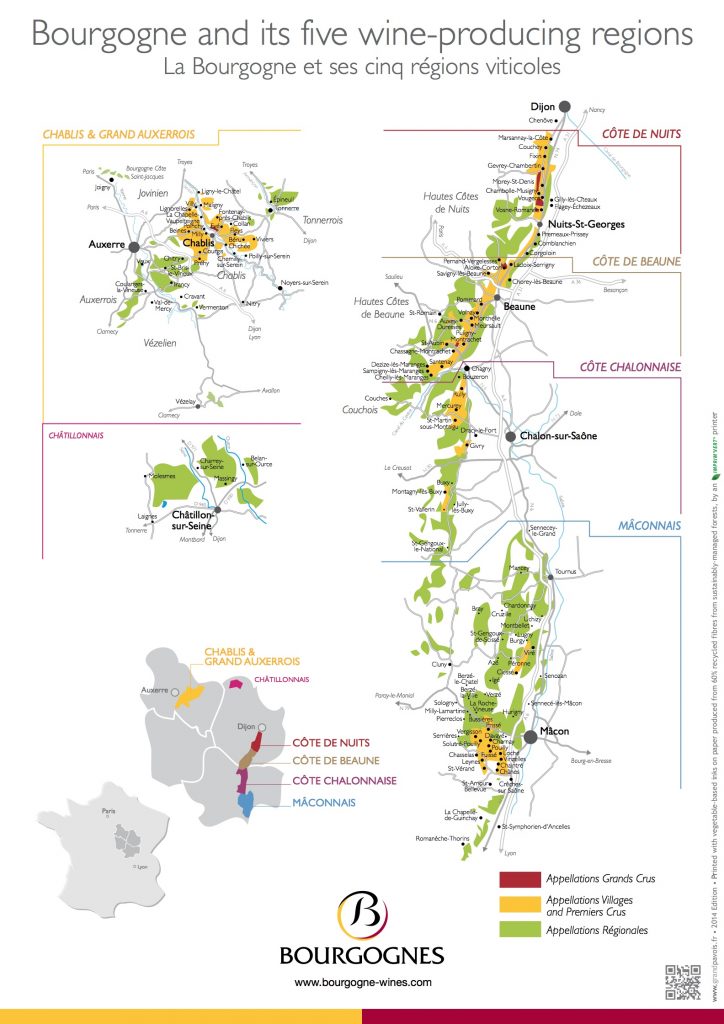We’ve moved to hard core red territory and landed in Pommard as we exploring the sub-regions and villages of Burgundy. It’s about as close as you can come to visiting them.
In this series, we’ll cover Chassagne-Montrachet, Pugliny-Montrachet, Saint Aubin, Mersault, Pommard, Nuits-Saint-Georges, Vosne-Romanée, Clos-Vougeot, Chambolle-Musigny, Morey-Saint-Denis, Gevrey-Chambertin and Chablis.
Make sure you join our community to get the latest as they come out. You’ll find all of our Burgundy related articles here.
There’s a quick refresher on the regions of Burgundy at the end of this post to help you place yourself within Burgundy and France as a whole.
The Reds of Pommard in the Côte de Beaune

Pommard is known for it’s Pinots. There is often a misconception that wines from Pommard are brutish, structured and will need decades to even be approachable. Like most things in life, mass generalisation does no one any favours. Historically there have been wines from the region that have been massive with extraction and structure that can take decades to soften. When you try wines from the likes of Domaine Thierry Violot-Guillemard and the likes of Benjain Leroux, from his time at Comte Armand and now under his own name you’ll find wines with supple, fine tannins that can drink beautifully as a young Burgundy, as always the metamorphisis that occurs with great Burgundy still requires patience.
The significant varriations in aspect, soil type, and, elevation offer equivalent varriation in styles.
Benchmark 1er Cru Pommard vineyards to look out for are Clos des Epeneaux, a monopole of Comte Armand on the north side of the village of Pommard, and on the south side, Les Rugien (Brave) and the slightly higher Les Rugien Hauts, Les Chanlins, and, Les Jarolières.
Anne Parent shares her thoughts on the secrets to understanding Pommard in this podcast with Levi Dalton. Most revealing is here exploration of the diversity of styles, significant difference between the northern and southern parts of Pommard and within the two great vineyards ‘Les Épenots’ and ‘Les Rugiens’
Exploring the Geology & Geography of Pommard
Overview Côte et Hautes Côtes de Beaune
The Regions of Burgundy
The best bit of Burgundy is a thin strip running from North to South around 50km in length, to the South East of Paris
It’s split into three main regions, within each of these regions there are villages which have specific single vineyards planted in them to the varieties red varieties: Pinot Noir and Gamay, and the white varieties: Chardonnay and Aligoté, a lesser variety that produces some fun wines at more affordable prices.
The three main regions in the strip South of Dijon are:
- Côte D’Or – meaning the Golden Slope, derived from it’s original name, Côte d’Orient, East Slope, within which rest:
- Côte-de-Nuits – South of the city of Dijon and North of the town of Beaune famous for it’s Pinot Noir. The best known villages are: Gevrey-Chambertin, Morey-St-Denis, Chambolle-Musigny, Nuits-St-Georges and Vosne-Romanée. 5% of Burgundy production including Chablis.
- Côte-du-Beaune – The area around and South of Beaune famous for Chardonnay including the 5 Grand Cru vineyards and many very good Pinot producing vineyards. The best known villages are: Puligny-Montrachet, Chassagne-Montrachet, Mersault, Volnay, Pommard and Saint Aubin. 10% of production including Chablis.
- Côte-Chalonaise – Mixing more affordable Chardonnay and Pinot that can be of excellent quality. The villages of Rully, Mercurey and Givry producing their best wines.
- Mâconnaise – The least regarded of the main regions, still capable of producing some very good wines. Becoming a shining light for value with the ever increasing prices of Burgundy.
In addition to these, the two regions of Beaujolais, mostly producing Gamay, (at the South end of the Dijon Strip) and Chablis, mostly producing Chardonnay (between the southern part of Champagne and Dijon) are part of the Bourgogne wine region.


You must be logged in to post a comment.